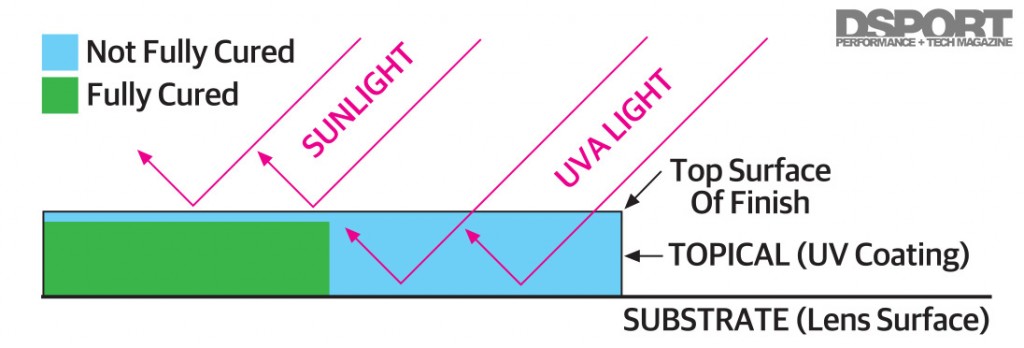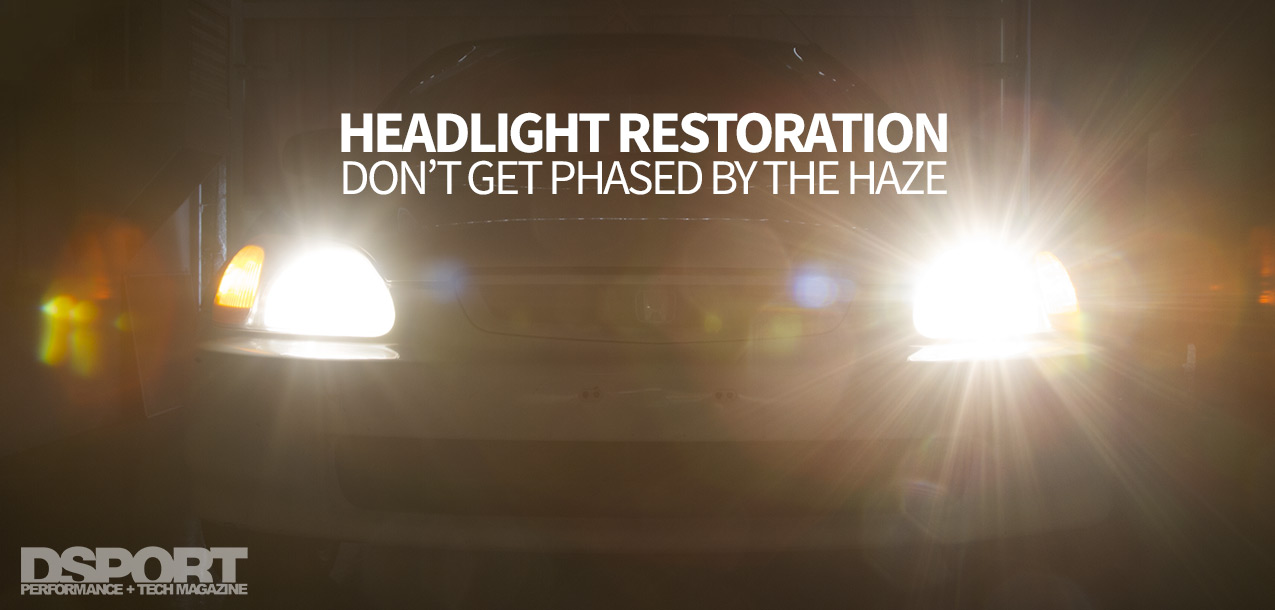UV Light – Friend and Foe
UV light has earned itself a bad rap for the damage that it can cause to skin as well as to vehicle surfaces, inside and out. But it’s not all bad, as some of the headlight protectants rely on UV light to cure and form a UV resistant coating on the headlight surface. These UVA lights need to be operated with care, and proper eye and skin protection is a must. Nonetheless, employing a UVA light for curing saves precious time, lends to efficiency and improves durability.
For example, LensBright’s professional level kit includes dual UVA floodlights that accelerate the curing process dramatically. According to John Wilson at SPDIUV, the protective coating requires 15-to-25 minutes in sunlight, but just 2-to-5 minutes when subjected to direct UVA floodlights. Due to the intensity of the UVA light output, it also penetrates to the deepest layer of the UV coating for a more thorough and proper curing.
Sunlight can cure UV protectants, but it is not as intense and can slow the curing process of photo-initiated protectants. In addition, the sun’s UV light may not offer the intensity needed to penetrate all the way through the sealant layer to the headlight lens. A proper UVA light solution can offer a more focused and intense UVA light, which will result in a photo-initiated sealant that has thoroughly hardened through to the surface of the headlight lens.
 Not all UV protectant finishes can be considered cured just because they become dry to the touch. Some UV formulas do not fully cure with sunlight alone, requiring focused UVA flood lamps for complete and proper curing down to the lens surface. For these systems, the UVA flood lamps cure the UV coating more completely and accelerate the curing time to just a few minutes.
Not all UV protectant finishes can be considered cured just because they become dry to the touch. Some UV formulas do not fully cure with sunlight alone, requiring focused UVA flood lamps for complete and proper curing down to the lens surface. For these systems, the UVA flood lamps cure the UV coating more completely and accelerate the curing time to just a few minutes.
Ultraviolet Light, Explained
Ultraviolet light occurs outside the visible spectrum of light that most people can see, occupying wavelengths ranging from 100 nanometers to 400 nanometers. UV light can be subdivided into three categories, UVA (400-315 nanometers), UVB (315-280 nanometers) and UVC (280-100 nanometers). While the Earth’s ozone layer absorbs all UVC and most UVB, the wavelengths of UVB and UVA light that makes it through are what cause sunburns for people and damage to vehicles, including the deterioration of headlight lenses.
Delivering UVA light can be accomplished in a variety of fashions. Focused and bounced light sources deliver intense UVA energy to the protectant. By comparison, a flood-type light source will cover a broad area while still penetrating through to the substrate.
Page 1- Intro to Headlight Restoration
Page 4- Intial Results / Verdict
Headlight Restoration Product Showcase


